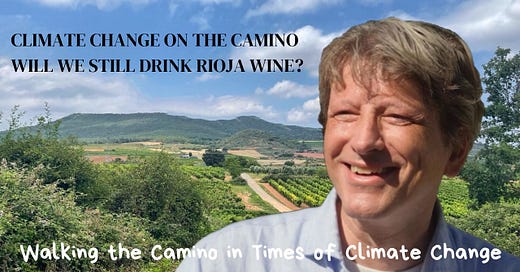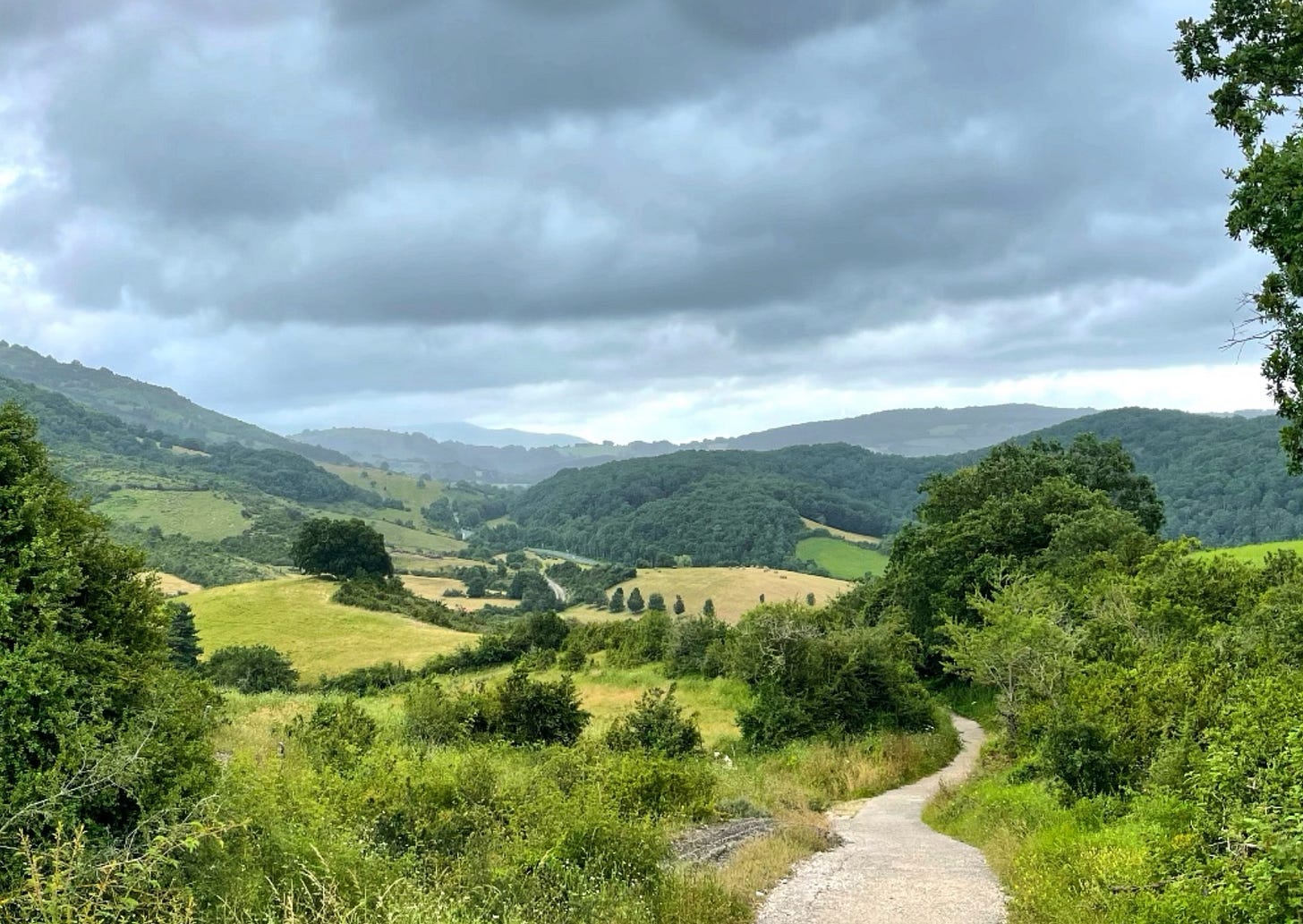
This summer, I walked through the beautiful Rioja wine region for the second time. For pilgrims following the classic Camino Frances route, it takes about a week of walking to get from the French-Spanish border crossing to Logroño, the captivating capital of the Rioja region. This charming city's streets come alive in the evenings as locals and visitors gather to taste Rioja wine and indulge in pinchos, the regional version of tapas.
Logroño holds a special place in the memories of many pilgrims. For some, it marks the end of their Camino journey. They remember the city as the place where they learned the hard way that walking too fast, without proper training and appropriate shoes, frequently results in injuries that force them to abandon their quest to reach Santiago de Compostela.
This situation isn't helped by the challenge encountered on the very first day of the demanding hike across northern Spain. That initial stretch is known as the Napoleon route over the Pyrenees, which starts from St. Jean Pied de Port in France and crosses the Pyrenees mountain range into Roncesvalles in Spain. It owes its name to Napoleon because he allegedly used this route to invade Spain in 1808 during the Peninsular War.
The Napoleon route is considered one of the most scenic and challenging sections of the Camino Francés. It entails a steep ascent and descent over some 25 kilometers. I vividly recall how much I enjoyed the stunning views of the Pyrenees and the surrounding valleys. The route is only open between May and October, as it is impassable during the rest of the year due to snow and ice.
During my walk this summer, I formed a diverse group of fellow pilgrims who joined me on the Napoleon route. All of them were happy to end their first day's hike in Roncesvalles, Spain. Our group was a melting pot, with participants from Italy, Colombia, Belgium, Germany, Austria, and South Africa. Although I continued in the afternoon, we would cross paths again in the following days.
Logroño is the second major city on the Camino Francés, following Pamplona, which most pilgrims reach by the third day of their journey. After I left the city, I made a video in the vast vineyards in the heart of the Rioja region, which you may remember from when I posted it in this newsletter. I will attach it here for you to revisit:
As I mentioned in yesterday's newsletter, my inquiries into the effect of climate change on wine production eventually led me to Swiss Re in Zurich. There, I had the privilege of interviewing Stefanos Mystakidis, an Agriculture Risk Analyst and modeler with profound expertise in the challenges of wine production in regions impacted by climate change.
The knowledge he shared during our ten-minute interview was fascinating. He managed to condense a wealth of information into that brief discussion. I hope you'll find it as informative as I did. I'm providing both a short teaser and the full interview for you to enjoy:
The short version:
The full ten-minute interview:
Stay tuned for two more videos in the coming weeks. Your comments and feedback are always appreciated.
And so are subscriptions…
Footsteps Through the Fog: The First Day on the Camino de Santiago
It is nearly 1 a.m. in the dimly lit living room in a hostel in Zubiri, a small and unremarkable town in the heart of Navarre, Spain. All weary pilgrims retired to their beds many hours ago. The stragglers who went to bed only three hours ago promised a late start in the morning. Yet, all of us, the sleepers and the night writer, share the anticipation …









Adaptation seems to be the order of the day. That makes complete sense to me for the farmer and for an insurer of ongoing commercial enterprises. It is the unfortunate reality that the train has left the station, and the chief engineer is too distracted or busy looking at her/his/their reflection in the mirror to make a decision on which route needs to be followed for us and our fellow residents of Earth. Thanks for the interesting video. Looking forward to the next two.
Always a very interesting topic.. Weather changes plays a crucial role in Vinyards, producing wine..The slightest change in rain, heat patterns has an immediate, domino effect and can be devastating. The same applies to Peaches, Apples.. 🐝 🐝 bees are our little angel workers. Weather changes even confuse them and that in itself has huge impact on fruit forming and pollinating. Wonderful, Intriguing and Complex world we live in. Thank you Alexander for bringing this to the Forefront and explaining the process.